During the warranty period, this operation should only be carried out in an approved workshop or in our factory, otherwise the warranty may be invalidated.
Whilst being handled, the machine should remain horizontal (rotor not locked in position). Check how much the alternator weighs before choosing the lifting method.
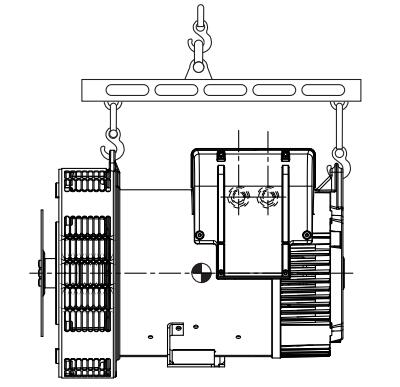
• Tools required
To fully dismantle the machine, we recommend using the tools listed below:
- 1 ratchet spanner + extension
- 1 torque wrench
- 1 set of flat spanners: 8 mm, 10 mm, 12 mm - 1 socket set: 8, 10, 13 mm
- 1 socket TORX bit T20, T30
- 1 puller (eg. Facom: U35, U32/350)
• Screw tightening torque
See section 5.3.
The screws for fixing the feet on the housing and immobilising the stator must not be removed (bolt of the stator lower).
• Access to connections and the regulation system
The terminals and AVR are accessed directly by removing the terminal box lid (41).
• Accessing, checking and replacing the diode bridge
Dismantling
- Remove the terminal box lid [41].
- Cut the fixing clamps of the exciter cables, disconnect E+, E- from the exciter.
- Remove the 4 nuts on the tie rods.
- Remove the NDE shield [36] using a puller: eg. U.32 - 350 (Facom).
- Unsolder the connections.
- Check the bridge using an ohmmeter or a battery lamp.
Reassembly
- Replace the bridges, respecting the polarity.
- Resolder the connections.
- Fit a new O ring seal in the shield.
- Refit the NDE shield and pass the bundle of wires between the top bars of the shield.
- Replace the fixing clamps on the cables.
- Replace the terminal box lid [48].
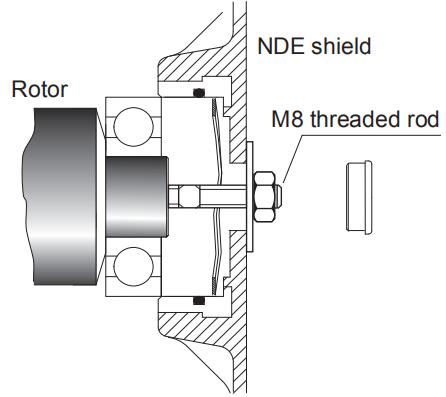
• Replacing the NDE bearing on single-bearing machines
Dismantling
- Remove the NDE shield [36].
- Remove the ball bearing [70] using a screw puller.
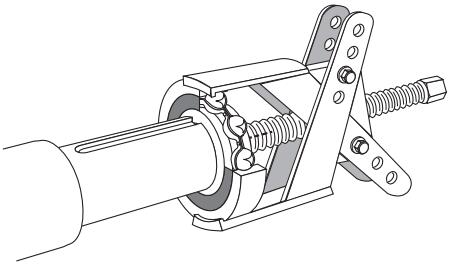
Reassembly
- Heat the inner slipring of a new bearing by induction or in a drying oven at 80 °C (do not use an oil bath) and fit it to the alternator.
- Place the preloading wavy washer [79] in the flange and fit a new O ring seal [349].
- Replace the NDE bracket [36]
• Replacing the bearings on a two-bearing alternator
Dismantling
- Uncouple the alternator from the prime mover.
- Remove the 8 assembly screws.
- Remove the DE flange [30].
- Remove the NDE bracket.
- Remove both bearings [60] and [70] using a puller.
Reassembly
- Fit new bearings after heating them by induction or in a drying oven at 80 °C (do not use an oil bath).
- Check that both the preloading wavy washer [79] and new O ring seal have been fitted [349] on the NDE bracket [36].
- Replace the DE flange [30], and tighten the 8 fixing screws.
- Check that the whole alternator is correctly assembled and that all screws are fully tightened.
• Accessing the main field and stator Dismantling
Follow the procedure for dismantling bearings.
- Remove the coupling discs (single-bearing alternator) or the DE flange (two-bearing alternator) and insert a tube of the corresponding diameter on the shaft end or a support made according the following bellow.
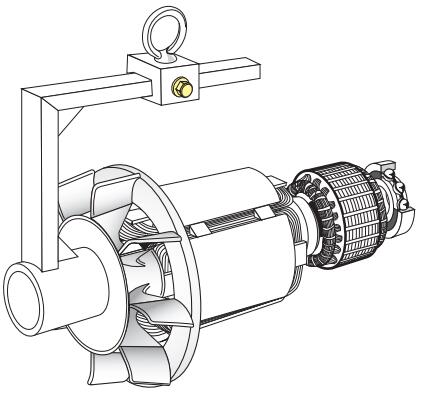
- Rest the rotor on one of its poles, then slide it out. Use the tube as a lever arm to assist dismantling.
- After extraction, be careful with the fan. It is necessary to replace the fan in case of disassembling.
- After extracting the rotor, be careful not to damage the fan and place the revolving field on special V-blocks.
NOTE: If intervention is required on the main field (rewinding, replacement of components), the rotor assembly must be rebalanced.
Reassembly
- Follow the dismantling procedure in reverse order.
Take care not to knock the windings when refitting the rotor in the stator.
If you replace the fan, respect the assembly guide according the following bellow. Use a tube and a screw.
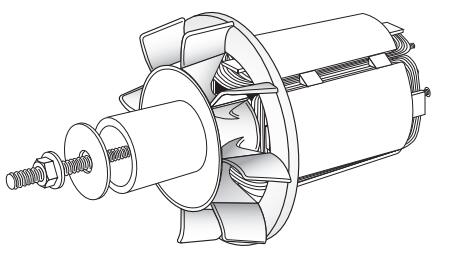
Follow the procedure for reassembling the bearings.
Table of average values:
Alternator - 4 pole - 50 Hz/60 Hz - Winding no. 6 and M or M1 connected in dedicated single-phase (400 V for the excitation values).
The voltage and current values are given for no-load operation and operation at rated load with separate field excitation. All values are given to ± 10% (for exact values, consult the test report) and are subject to change without prior warning. For 60 Hz operation, the resistance values are the same and the excitation current “i exc” is approximately 5 to 10% weaker.
• Three-phase: 4-pole, SHUNT excitation Resistances at 20°C (Ω)
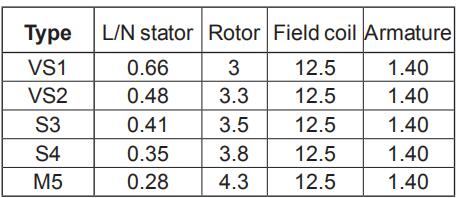
Field excitation current i exc (A) 400V - 50 Hz
“i exc”: excitation current of the exciter field
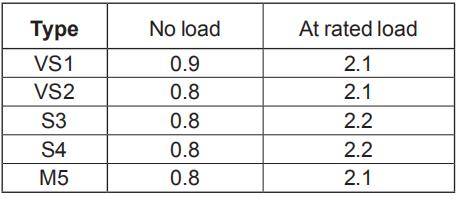
• Three-phase: 4-pole, AREP excitation Resistances at 20°C (Ω)
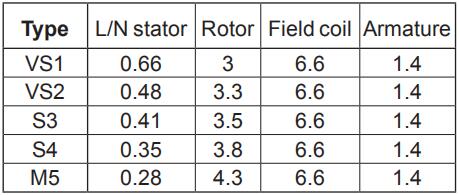
Resistance of auxiliary windings at 20°C (Ω)
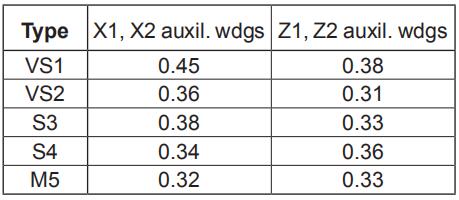
More information about Leroy-Somer LSA 40 alternator at: Maintenance Manual for Leroy-Somer LSA 40 Alternator
Copyright © Guangxi Dingbo Generator Set Manufacturing Co., Ltd. All Rights Reserved | Sitemap
Update cookies preferences